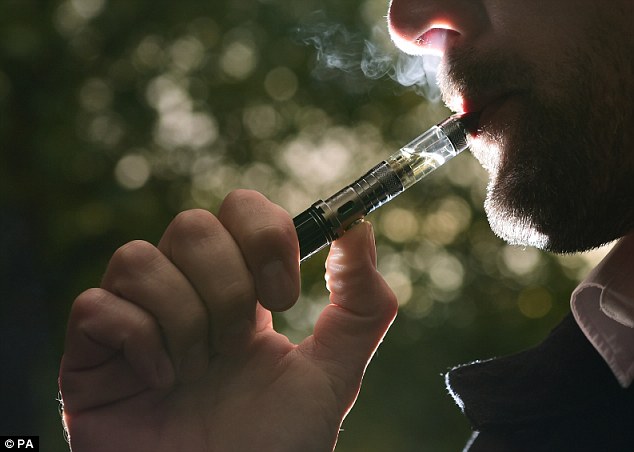Islamic fatwa declared on e-cigs: Vaping is forbidden for Muslims, declares chief Malaysian cleric
Tue 22 Dec 2015, 19:04:19

E-cigarettes and vaping has been declared 'haram' - forbidden for Muslims - in Malaysia, its national fatwa council announced Monday.
A fatwa has been issued after a special meeting of Malaysia's National Fatwa Council, stating vaping is equal to drinking poison.
Electronic cigarettes are already banned for Muslims in four Malaysian states, as well as several other Muslim countries, including Kuwait and the United Arab Emirates.
The council finds that the consumption of something that is harmful, whether direct or indirectly, purposely or not, could lead to harm or death; so this will not be allowed,' Dr Abdul Shukor Husin, chair of the council said at a press conference.
'E-cigarettes and vapes are categorised as repulsive due to its harming effects and bad smell,' Dr Shukor Husin added according to the IBTimes.
'They also have an element of wastage, which is by spending money on things that are harmful and non-beneficial.'
'We are seeing women and school children showing interest in vape. The decision is made to prevent an unhealthy culture from spreading to future generations.'
An estimated 2.6million people in the UK use e-cigarettes, which provide a nicotine hit without the cancer-causing chemicals found in tobacco.
Research published earlier this year found that teenagers who use e-cigarettes are four times more likely to end up smoking 'real' cigarettes.
American researchers said unregulated electronic cigarettes which are advertised on TV and in magazines serve as a gateway to smoking for teens and young adults.
Results showed 38 per cent of e-cigarette users had started smoking traditional cigarettes within a year compared to just ten per cent who had not used an e-cig.
Earlier this month, it emerged that a type of e-cigs will soon be available on the NHS for smokers trying to quit alongside patches and gums. A review recently declared them 95 per cent safer than the real thing.
Q: What are e-cigarettes?
A: E-cigarettes, also known as personal vaporisers (PV) or an electronic nicotine delivery system (ENDS), give users a nicotine hit without burning tobacco leaves.
When the user sucks on the e-cigarette, liquid nicotine is vaporised and absorbed through the mouth.
When they breathe out, a plume of what appears to be smoke is emitted but it is actually largely water vapour.
A battery-powered heating coil heats the liquid to form the vapour, with some of the designs involving a pressure sensor that is activated by the user taking a puff, while others have
a button to heat them automatically.
a button to heat them automatically.
Q: How popular are they?
A: Inventor Hon Lik was the first to have his idea patented in his native China in 2003, and it has since become an industry worth around £2 billion. Anti-smoking group Ash estimates there are now 2.6 million vapers in the UK.
Q: Are they all the same?
A: No. There are a huge variety of products on the market, and hundreds of different flavours.
Cigalikes were the first kind of e-cigarettes, designed to look as much like a traditional cigarette as possible in order to make them more appealing to smokers.
They use either disposable or replaceable cartridges.
Because they are so small they can only be fitted with low-capacity batteries and need to be recharged more often than the larger tank-type e-cigarettes that were later developed and which can be refilled with 'e-liquid'.
Cigalikes are often regarded as the 'entry level' to vaping, before users move on to larger models.
Q: What are the health risks?
A: Numerous studies have been carried out, but as e-cigarettes are such a new product they can only look at the short-term effects. Public Health England (PHE) said that experts have calculated vaping to be at least 95 per cent less dangerous than smoking - or alternatively that smoking is 20 times more dangerous than using e-cigarettes.
While cigarettes contain carcinogens and other toxic chemicals contained in tar from tobacco, e-cigarettes do not burn tobacco and so avoid delivering these substances.
The main health issues surrounding e-cigarettes concern other ingredients, contaminants and by-products, which can generate some toxicants - but these are at the very low levels found in the air that people generally breathe.
Q. Should people switch immediately?
But while e-cigarettes are far less dangerous than conventional cigarettes, health experts are not encouraging people to take up the habit for the sake of it.
The emergence of e-cigarettes has given way to fears that they will act as a gateway to smoking conventional cigarettes among those who have never smoked - particularly children - but there is no evidence to support this.
Although many youngsters report having tried vaping, as Professor Peter Hajek, director of the Tobacco Dependence Research Unit at Queen Mary, University of London, and a co-author of the PHE report, said: 'People who are attracted to e-cigarettes are the same people who are attracted to smoking.
'People who drink white wine are more likely to try red wine than people who do not drink alcohol.'
No Comments For This Post, Be first to write a Comment.
Most viewed from Specials
Most viewed from World
AIMIM News
Latest Urdu News
Most Viewed
May 26, 2020
Do you think Canada-India relations will improve under New PM Mark Carney?
Latest Videos View All
Like Us
Home
About Us
Advertise With Us
All Polls
Epaper Archives
Privacy Policy
Contact Us
Download Etemaad App
© 2025 Etemaad Daily News, All Rights Reserved.













.jpg)
.jpg)
.jpg)

.jpg)
.jpg)
.jpg)
.jpg)
.jpg)
.jpg)
.jpg)
.jpg)

















